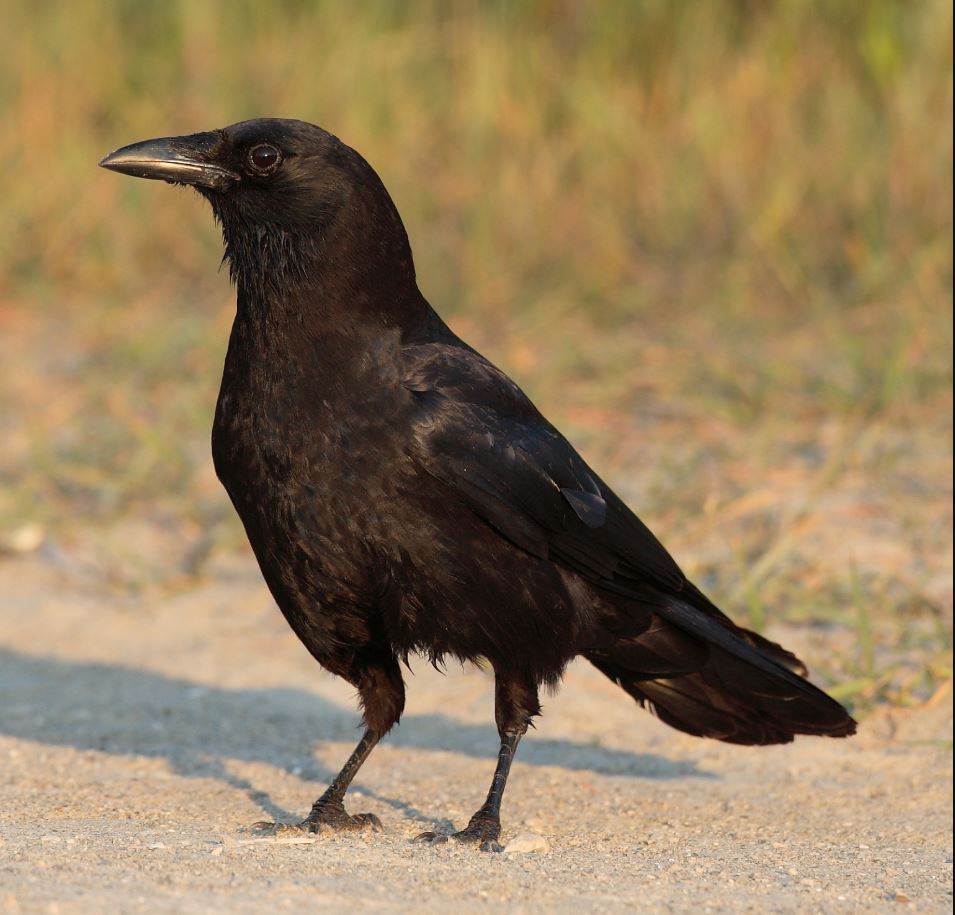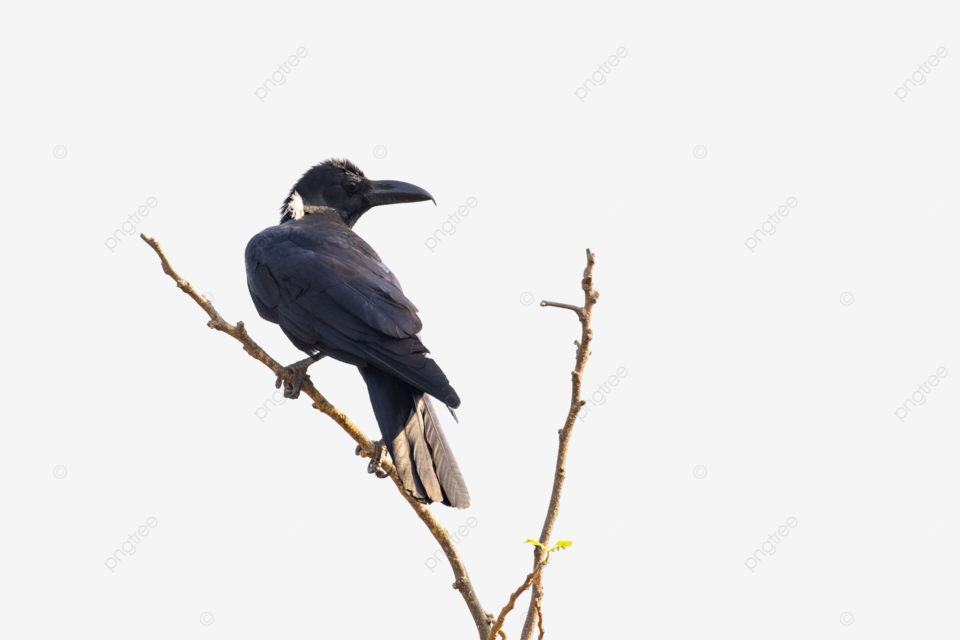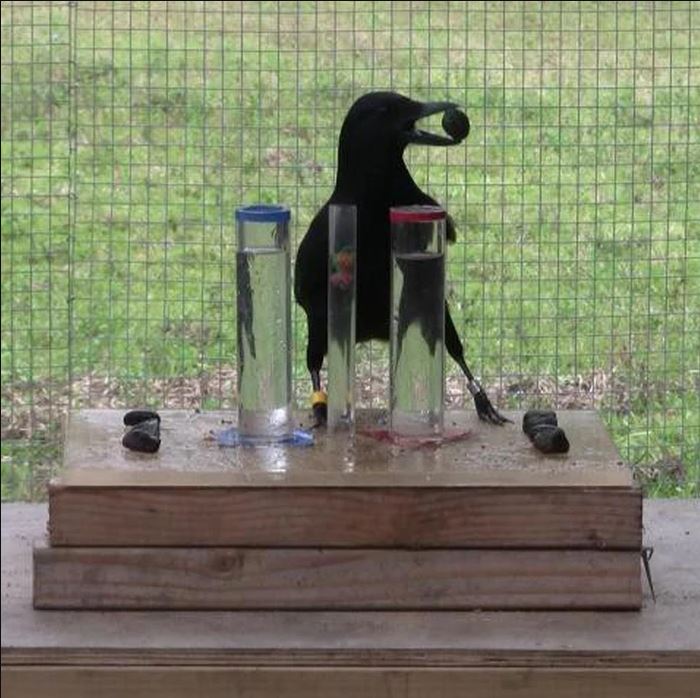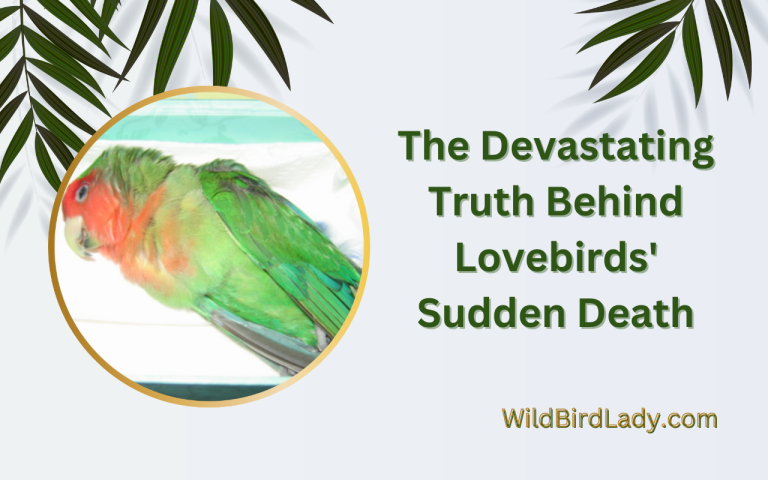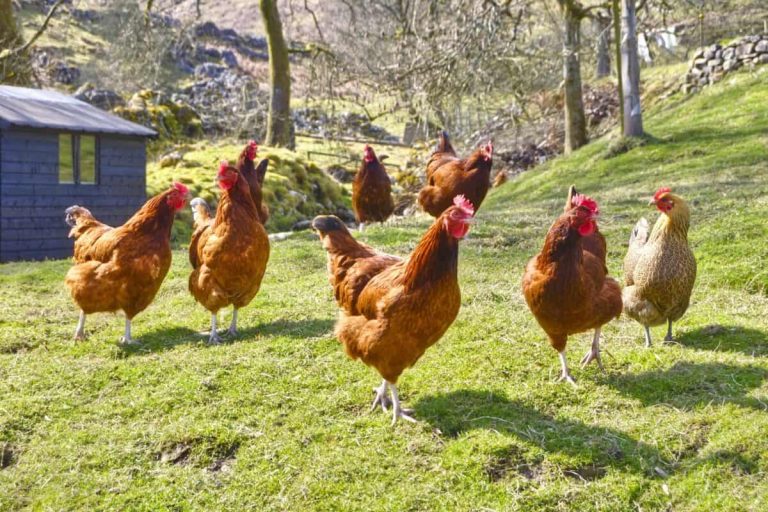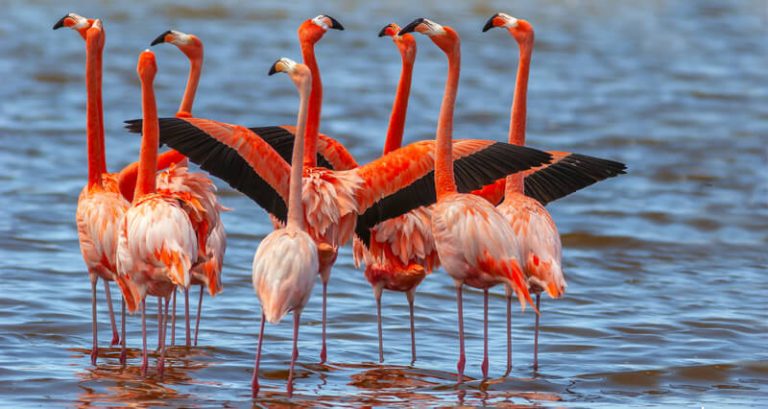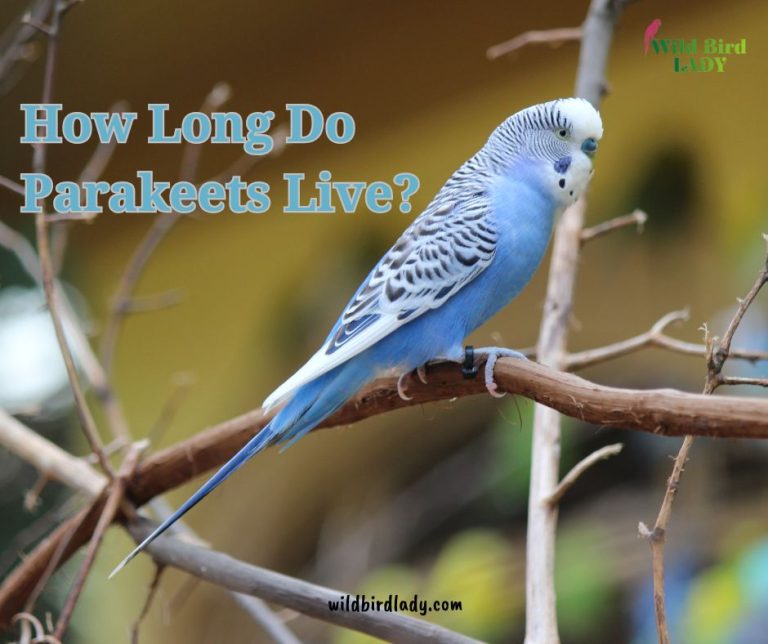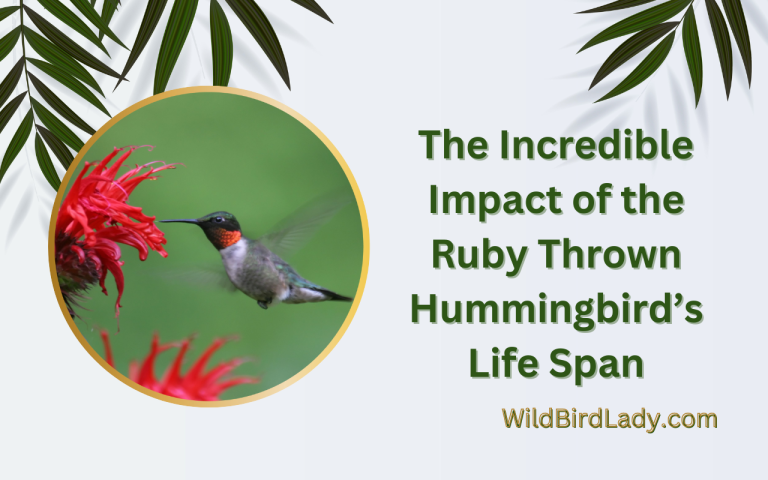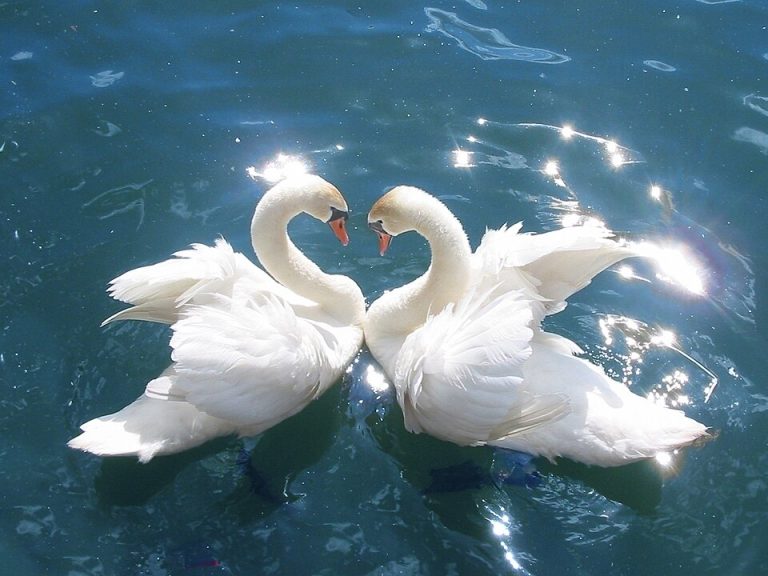How Long Do Crows Live? (And 5 Factors That Make Them Outlive Other Birds!)
Crows are among the most intelligent and adaptable birds on Earth, and they’ve long captured human imagination through myths, legends, and modern science. But how long do crows live? Is their lifespan the same in the wild as it is in captivity? And what allows them to outlive many other birds in their environment?
In this comprehensive guide, we’ll uncover the truth about crow longevity, break down their average lifespan by species and environment, and explore the five fascinating factors that give them an edge over other birds.
How Long Do Crows Live on Average?
On average, crows live between 7 to 8 years in the wild, but some individuals have been recorded living well over 15 years. In captivity, with access to veterinary care and protection from predators, crows can live even longer — up to 30 years or more.
But crow longevity isn’t one-size-fits-all. It depends on several factors, including species, environment, genetics, and human interference.
Lifespan of Common Crow Species
Let’s take a look at some of the most common crow species and how long they typically live:
| Species | Scientific Name | Average Wild Lifespan | Maximum Known Lifespan |
|---|---|---|---|
| American Crow | Corvus brachyrhynchos | 7–8 years | 17 years (wild), 30+ (captive) |
| Carrion Crow | Corvus corone | 4–7 years | 20+ years (captive) |
| Hooded Crow | Corvus cornix | 6–9 years | 16+ years |
| House Crow | Corvus splendens | 6–8 years | 18 years |
| Northwestern Crow | Corvus caurinus | 7–10 years | Data limited |
| Torresian Crow (Australia) | Corvus orru | 8–12 years | Data limited |
As shown above, American crows are among the most studied and can live particularly long lives in the right conditions.
Wild vs. Captivity: What’s the Difference?
The environment in which a crow lives has a dramatic impact on its lifespan. While both wild and captive crows can live fulfilling lives, the challenges and benefits they face are drastically different.
🏞️ Life in the Wild: A Daily Test of Survival
Wild crows live in a complex, ever-changing environment that demands constant awareness, adaptability, and resilience. Their survival depends not just on instinct, but on their intelligence and social cooperation.
Here are some of the most pressing challenges wild crows face:
1. Predators at Every Turn
Wild crows must constantly be on guard against natural predators. These include:
- Birds of prey like hawks, falcons, and owls.
- Mammalian predators such as raccoons, foxes, and domestic cats.
- Even humans, who can pose a threat through hunting or habitat disruption.
Young fledglings are especially vulnerable, and many do not survive their first year due to predation.
2. Exposure to Disease and Harsh Weather
Without medical care, wild crows are highly susceptible to:
- Infectious diseases like West Nile virus, avian flu, and avian pox.
- Parasites including lice, mites, and internal worms.
- Weather extremes, such as freezing winters, heat waves, storms, and droughts that can limit food supply or damage nests.
Even the smartest crow can’t always outwit the forces of nature.
While some crows have adapted well to city life, they still face serious risks from human presence:
3. Human Activity and Environmental Hazards
- Poisoning from pesticides, rodenticides, or lead.
- Electrocution from power lines or collisions with vehicles.
- Shooting or trapping in areas where crows are seen as agricultural pests.
Habitat destruction due to urban development, deforestation, and pollution also reduces available nesting and feeding grounds.
4. Food Scarcity and Competition
In nature, food availability fluctuates. Crows often compete with other birds and animals for:
- Insects, grains, fruits, and small animals.
- Leftovers in urban areas, where competition can be fierce among scavengers.
Despite their omnivorous nature, crows must be opportunistic and strategic to secure enough nutrients for survival.
⭐ But Here’s the Twist:
Even with all these dangers, wild crows still manage to live longer than many birds their size. Why? Because they’re incredibly smart, social, and resourceful. Their ability to learn from experience, teach others, and form protective groups plays a major role in keeping them alive longer than expected.
Life in Captivity: Safety, Security, and a Longer Lifespan
Captive crows, especially those in sanctuaries, research centers, or under licensed wildlife rehabilitators, enjoy a life of comparative comfort and safety.
Here’s what makes life in captivity much more favorable for a long lifespan:
1. Access to Consistent Medical Care
Captive crows receive regular veterinary checkups and treatment for injuries, parasites, and illness. This drastically reduces the mortality rate from preventable causes that wild crows face daily.
2. A Stable, Balanced Diet
Instead of scavenging or hunting, captive crows are provided with:
- Nutritionally balanced food (fruits, protein, grains).
- Clean water.
- Supplementation, if needed, for deficiencies or age-related conditions.
This consistent nutrition helps maintain their overall health and extends their life.
3. No Predators, Less Stress
Living without fear of being attacked at any moment makes a huge difference:
- Crows in captivity do not waste energy on constant vigilance.
- Lower stress leads to better immune function, mental clarity, and fewer behavioral issues.
Stress is a silent killer in wildlife—and captive life removes much of it.
4. Climate-Controlled Environment
Most captive environments protect birds from:
- Extreme cold or heat.
- Flooding, wind, or snow.
- Habitat destruction or the risk of being forced to relocate.
Whether it’s an indoor enclosure or an outdoor aviary, the controlled conditions help reduce injuries and exhaustion caused by harsh weather.
5. Enrichment and Social Interaction
Responsible care facilities often provide:
- Puzzle feeders and toys to engage their minds.
- Interaction with other crows or humans, which satisfies their social instincts.
- Flight space for exercise and physical stimulation.
A mentally and physically stimulated crow is a healthy one.
The Numbers Speak: How Long Do They Live?
| Environment | Typical Lifespan | Maximum Recorded |
|---|---|---|
| Wild | 7–8 years (on average) | 17 years (rare cases) |
| Captivity | 15–20 years (common) | 30–40 years (exceptional) |
In rare cases, captive crows have been documented to live up to 59 years, though this is not the norm and often occurs under highly specialized care.
Summary
| Wild Crows | Captive Crows |
|---|---|
| Face predators and environmental threats daily | Protected from natural dangers |
| Susceptible to disease and starvation | Access to food, water, and medicine |
| Must compete for nesting and feeding | No competition for resources |
| Learn from their group to survive | Receive human support and enrichment |
| Average lifespan: 7–8 years | Average lifespan: 15–20+ years |
In conclusion, while crows are naturally built for survival, those fortunate enough to live in protected environments with proper care can live twice—or even three times—longer than their wild relatives. This stark contrast highlights the importance of both their inherent intelligence and the external conditions they face throughout their lives.
5 Factors That Help Crows Live Longer Than Other Birds
Why do crows live so long, even in the wild? Let’s explore the key reasons.
1. Extraordinary Intelligence
Crows are members of the corvid family, which includes ravens, magpies, and jays—some of the smartest birds on Earth. Crows can:
- Use tools.
- Solve puzzles.
- Recognize human faces.
- Plan for the future.
Their intelligence helps them avoid danger, find food efficiently, and adapt to urban environments, all of which contribute to longer lifespans.
Fun Fact: A study from the University of Washington showed that American crows can remember the face of someone who harmed them—and teach other crows to avoid that person too!
2. Complex Social Structures
Crows live in tight family groups, often staying with their parents for several years. This social bond means:
- Better protection against predators.
- Shared knowledge about food sources and threats.
- Cooperative breeding and shared parenting.
This community structure gives them an edge over solitary birds that rely only on individual survival strategies.
3. Urban Adaptability
Crows have thrived in cities and suburbs, where they benefit from:
- Readily available food scraps and garbage.
- Warmer temperatures in winter.
- Fewer natural predators in dense urban areas.
Urban environments can increase crow lifespans compared to more hazardous rural or wilderness habitats.
4. Varied and Opportunistic Diet
Crows are omnivores and will eat almost anything:
- Insects, small mammals, eggs
- Fruits, seeds, nuts
- Human food waste and roadkill
This flexibility in diet means they rarely face starvation, a common cause of death for other bird species with more restricted feeding habits.
5. Flight Skills and Mobility
Crows are strong, agile fliers. Their flight capabilities help them:
- Escape from predators quickly.
- Cover large areas to find food.
- Migrate or relocate when conditions become unfavorable.
Mobility directly contributes to better survival and, by extension, longevity.
Common Threats to Crows’ Lifespan
Despite their intelligence, adaptability, and strong social bonds, crows are not immune to danger. Many external threats still limit their lifespan, especially in wild environments. These threats often stem from human activity—either directly or indirectly—and can have both immediate and long-term impacts on crow populations.
Let’s take a closer look at the most common threats to crows’ longevity:
1. Human Conflict
While some cultures admire crows for their cleverness, others view them as nuisances or agricultural pests. Crows are known to raid crops, steal eggs, and scavenge from garbage, which often brings them into conflict with humans.
Key dangers from human conflict include:
- Poisoning: Farmers and landowners sometimes use toxic bait to eliminate crows and other so-called pest birds. Unfortunately, this method is indiscriminate and can also harm non-target species like hawks, owls, and domestic animals.
- Shooting and Trapping: In some rural regions, it’s still common to shoot or trap crows to “protect” crops or livestock. While regulations exist in many areas, enforcement is often lacking.
- Recreational Culling: In parts of the U.S. and other countries, crows are sometimes hunted for sport, especially where they’re not protected under local wildlife laws.
Impact: These actions can significantly reduce local crow populations and break up complex social groups, which are essential for survival and longevity.
2. Environmental Toxins
Crows are scavengers and omnivores, meaning they’re highly exposed to environmental contaminants through the food chain. These toxins can accumulate in their bodies over time, leading to chronic health problems or sudden death.
Most common environmental poisons include:
- Lead: Crows may ingest lead from bullets in carrion, contaminated water, or urban soil. Lead poisoning affects the nervous system and can be fatal.
- Mercury: Often found in polluted aquatic environments, mercury is a neurotoxin that can impair reproduction, memory, and motor function.
- Pesticides: Chemical sprays used in agriculture and landscaping can contaminate the insects or crops that crows eat, causing liver and kidney damage.
- Rodenticides: Crows that feed on poisoned rodents can suffer secondary poisoning, which often results in internal bleeding and death.
Impact: These toxins weaken crows over time, lowering their immune response, fertility, and ability to evade predators.
3. West Nile Virus
One of the most devastating events for crow populations in recent history was the emergence of West Nile Virus (WNV) in North America in the early 2000s.
What is West Nile Virus?
- It’s a mosquito-borne illness that affects birds, humans, and some mammals.
- Crows are particularly highly susceptible—many die within days of infection.
- The virus spreads quickly in urban environments where standing water allows mosquitoes to breed rapidly.
Impact: In some areas, WNV caused local crow populations to decline by over 90% within a single breeding season. Although resistance has improved in recent years, WNV remains a major biological threat, especially during warmer months.
4. Habitat Loss and Fragmentation
As cities expand and forests are cleared for agriculture, the natural habitats that crows rely on are shrinking or becoming fragmented.
Key causes of habitat loss include:
- Urban development: Roads, buildings, and parking lots replace trees and nesting areas.
- Agricultural expansion: Monoculture fields lack the biodiversity crows need for nesting and foraging.
- Logging and deforestation: This removes the mature trees that crows use for nesting and roosting.
Even though crows are more adaptable than most birds, they still need tree cover, open space, and access to food to thrive.
Impact: Habitat loss pushes crows into unfamiliar territories or forces them into urban areas where they’re more likely to face human conflict, environmental toxins, and traffic collisions.
Bonus: Traffic Accidents
Although not among the top four threats, it’s worth noting that roadkill scavenging puts crows at risk of being hit by vehicles.
- Crows are smart enough to wait for cars to pass, but if they’re in a group or focused on food, they may not move in time.
- This is particularly dangerous for younger or less experienced individuals.
Impact: Road mortality is especially common in urban and suburban crow populations.
Summary Table: Threats to Crows’ Lifespan
| Threat | Cause | Effect on Crows |
|---|---|---|
| Human Conflict | Shooting, poisoning, trapping | Direct mortality, stress, disruption of social groups |
| Environmental Toxins | Lead, mercury, pesticides, rodenticides | Organ failure, neurological damage, secondary poisoning |
| West Nile Virus | Mosquito bites | High mortality rate, especially in summer |
| Habitat Loss | Urbanization, deforestation, agriculture | Reduced nesting sites, increased exposure to predators |
| Traffic Collisions | Scavenging roadkill, low flight near roads | Injury or death, especially in young crows |
While crows are survivors by nature, these threats show that even the most intelligent birds need protection. Conservation efforts, public education, and sustainable development practices can go a long way toward ensuring that crows continue to thrive alongside us.
How You Can Help Crows Live Longer
Love crows? You’re not alone. These brilliant, social birds have fascinated humans for centuries — and they need our help more than ever. While crows are highly adaptable, their survival in an increasingly human-dominated world depends on the choices we make in our neighborhoods, gardens, and communities.
Here’s how you can play a part in helping crows live longer, healthier lives:
1. Provide Safe Feeding Stations
Feeding crows can build trust and support their nutritional needs, especially during winter or nesting season — but it must be done responsibly.
✅ What to offer:
- Unsalted peanuts (in or out of the shell) — a crow favorite, rich in energy.
- Cooked grains like brown rice, oats, or cracked corn.
- Small pieces of fruit like apple slices, grapes, or berries.
- Boiled eggs — a great protein source when feeding fledglings.
🚫 What to avoid:
- Bread, chips, and processed human food — these offer little nutrition and may disrupt their digestive system.
- Raw meat or pet food — which can spoil quickly and attract unwanted predators.
💡 Pro Tip: Feed at consistent times and spots to reduce mess and allow crows to build routine trust.
2. Plant Native Trees and Shrubs
Crows don’t just eat in your yard — they may nest or roost there too. Native vegetation supports an entire ecosystem that benefits not only crows but their food sources and fellow birds.
Why it matters:
- Tall native trees like oaks, maples, and pines are ideal for nesting and roosting.
- Native shrubs attract insects, a key protein source for chicks.
- Leaf litter and understory plants support earthworms, beetles, and small animals crows prey on.
Avoid cutting down large trees during the breeding season (typically March to July) and let dead trees stand if safe — crows love nesting in snags!
3. Avoid Toxic Chemicals
The most dangerous substances to crows aren’t visible — they’re chemical.
Pesticides:
- Harm insects that crows rely on for food.
- Can cause neurological damage or illness when ingested indirectly.
Rodenticides:
- Often consumed secondhand by crows that eat poisoned rodents.
- Lead to internal bleeding, organ failure, and death — a silent killer of birds of prey and corvids alike.
Lawn and garden chemicals:
- Seep into water sources or contaminate bugs and earthworms.
- Even “eco-friendly” products can accumulate harmfully in birds’ systems.
Better choice: Use organic gardening methods, manual pest control, or attract beneficial predator insects instead.
4. Secure Your Trash and Compost
Crows are natural scavengers — smart enough to recognize food in almost any form. Unfortunately, this curiosity can get them into trouble.
Risks of unsecured trash:
- Plastic bags, string, or wrappers can be accidentally ingested, leading to choking or intestinal blockage.
- Rotten food or bones may be contaminated with bacteria or toxins.
- Glass shards and metal can lids can injure their beaks or feet.
What you can do:
- Use lidded trash bins that close tightly.
- Avoid throwing out food waste directly into the yard or alley.
- If composting, avoid adding dairy, meat, or oils — which attract scavengers but can be harmful.
Bonus: Clean trash practices benefit your whole local ecosystem — not just crows!
5. Respect Their Intelligence and Social Bonds
Crows aren’t just birds — they’re sentient, observant individuals. They remember faces, recognize kindness, and even hold grudges against those who harm them.
How to build trust with local crows:
- Be consistent in your behavior: feed them, speak softly, and avoid sudden movements.
- Don’t approach their nests closely, especially during breeding season — they will remember!
- Keep dogs and cats away from nesting areas when possible.
Over time, crows may:
- Greet you with vocalizations when they see you.
- Bring small “gifts” like shiny objects, bottle caps, or pebbles.
- Warn you of nearby dangers with alert calls.
Fun Fact: Studies show crows can remember human faces for up to five years — and they’ll pass that memory on to their group!
Bonus Ways to Support Crows:
- Support bird-friendly legislation that protects habitats and restricts toxic pesticide use.
- Educate neighbors and kids about the importance of crows in the ecosystem.
- Report wildlife injuries to local rehab centers if you see an injured crow.
- Leave out clean water in shallow dishes during hot months for drinking and bathing.
Helping crows live longer doesn’t require huge effort — just thoughtful action and a little understanding of how they live. These birds form lifelong family bonds, mourn their dead, and problem-solve like primates. They aren’t just survivors of the modern world; they’re some of its most impressive inhabitants.
By creating safer, healthier spaces, you not only support the lives of local crows — you help preserve the balance of nature in your very own backyard.
Final Thoughts
So, how long do crows live? In the wild, most crows make it to 7–8 years, but with luck, smarts, and safety, they can live far longer. In captivity, they may reach 30 years or more.
What makes them exceptional is not just how long they live—but how they manage to thrive in a world full of challenges. Thanks to their intelligence, diet, social bonds, and ability to adapt, crows continue to outlive many of their avian peers.
Next time you see a crow cawing from a rooftop or gliding overhead, remember: that might be one wise old survivor.
FAQs
Q: Can a crow be kept as a pet?
A: In most places, it’s illegal to keep native crows as pets without a permit. They’re best appreciated in the wild or in licensed sanctuaries.
Q: What’s the oldest recorded crow?
A: The oldest known captive American crow lived over 59 years under human care!
Q: Do crows mate for life?
A: Yes, most crow species form monogamous pair bonds that can last their entire lives.
Read more about crows: Crows Spiritual Meaning: Decoding Their Mystical Signs & Symbolism


